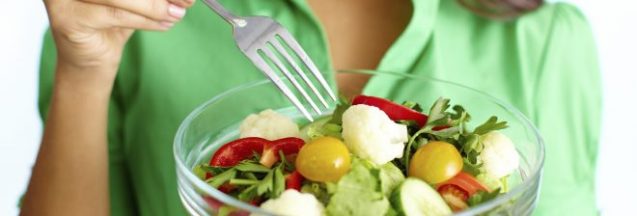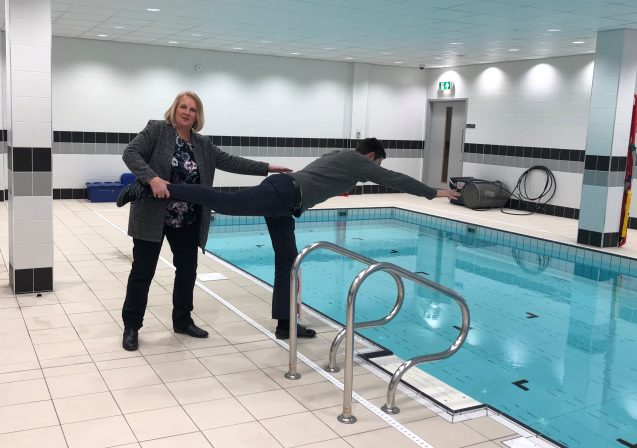It is known that balance and co-ordination is controlled by several parts of the body, namely the eyes and the ears. These senses pass on the data it has gathered via the nerves to the muscles to appropriately move about gracefully. In older people though, these senses deteriorate and as a result, balance may worsen. Improving balance and co-ordination can benefit everyone, especially the elderly, to increase health and mobility.
There are many factors that may hamper one’s balance and co-ordination. The alignment of your neck, your spine, and your pelvis is one. Age and disease is another problem. For example, when your pelvis is misaligned, your body needs to compensate for that misalignment. Your neck may shift to one side to promote balance, but this, in turn, may cause you stiffness and neck pain.
Age and disease can also contribute to poor balance. With poor balance, the elderly are prone to slips and falls. It hinders mobility and lessens the overall quality of life. Diseases such as arthritis and osteoporosis can also hamper balance and co-ordination.
Exercise improves flexibility and strength and, through these, balance and co-ordination. Nutrition is another important aspect of a healthy life. Important nutrients for balance and co-ordination include sodium, calcium, potassium, and magnesium as they are needed in regulating nerve impulses and muscle activity. Without them, you would experience painful cramps. Blueberries in particular are a superfood that contains many nutrients for improving balance and co-ordination.
With the right exercise and nutrition you will increase your chance of living a full healthy life.
More
Thursday, 12 September 2019; 18:30-20:30
Weir Field Recreation Ground (NG9 1LX)
Sophie is organising a social walk/jog/run for charity. Virtual Runner UK will kindly be providing medals in return for a donation (suggested minimum of £5) to MS Trust.
We are using the Beeston parkrun route and there will be cakes/treats to buy once you’ve finished (proceeds again going to the MS Trust).
If you want more information please search Facebook events (https://www.facebook.com/events/464947007671793/)
Hope to see you there!
If you are unable to attend but still want to make a donation please go to www.virginmoneygiving.com/SophieLondonMarathon2020
More
The most common causes of joint and back pain in school children are:
- Lack of exercise or excessive exercise
- Weight of school bags
- Bad posture
- Poorly set up desks
- Use of a computer or computer games
- Sports injuries
- Ill-fitting shoes/improper shoes
Lack of exercise and excessive exercise
The general finding from various studies is that children involved in competitive sports and those who are sedentary are more prone to getting low back pain while those that participated in moderate activity were protected. The children involved in competitive sports run the risk of getting repetitive strain injuries. Those children who are sedentary are often those who sit and watch a lot of television or play on a computer. The implication of this will be discussed below.
Weight of school bags
School bags are exceptionally heavy for those attending secondary school due to the number of different subjects covered and therefore the number of textbooks required and the fact the children often have to move between classes. Not all children have access to lockers, which mean that books have to carried with them. Bags carried on one shoulder causes an asymmetry of the body and therefore certain muscles will have to tighten and others lengthen in order to carry the bag. These kind of imbalances can cause long-term problems.
Bad posture
All aspects of life can induce bad posture; lack of exercise, weight of school bags, spending too much time playing computer games or on the computer, incorrect shoes, and growth. Those children who grow faster and become taller than their peers may slouch in order to not tower above their friends and this can ultimately lead to bad posture.
Poorly set up desks
Whether at school or home, ill fitting desks can lead to bad posture. School desks and chairs cannot cater for individual heights of children and, as mentioned earlier, the children often have to move between classes. The desks and chairs are uniform and unable to be altered to the child’s individual needs. Guidance on correct desk set up should be implemented at home; not just for the kids but also for everyone in the family who uses the desk. At school this can’t be done, but by advising the child to sit upright and not to slouch and not to cross the legs will help.
Use of a computer or computer games
Anybody position requires certain muscles to shorten and others to lengthen. This occurs every time we move. If we were to stay in one position for too long those muscles will eventually stay that particular length. When children play on computer games it quite often requires time. This leads to the above situation with muscles. Children should be encouraged to not spend longer than 30-40 minutes at any one time playing games, using a computer, or even doing homework before having a break. The child should spend a few minutes walking around and then returning to the game/homework by reviewing their posture and sitting correctly.
Sports injuries
Those children who play a lot of sport and those who play contact sports such as rugby may be injured either by direct contact or by overuse of certain muscles. If a child is injured it is advisable that they are seen by a chiropractor as problems unresolved can lead to compensations, ie walking differently due to sprained ankle leading to low back pain, a rugby tackle causing neck pain and headaches.
Ill-fitting shoes/improper shoes
Children are conscious of fashion, which can affect their shoe wear. Girls particularly may wear shoes with a high heel. This causes the calf muscles to shorten and pushes the body forward. To prevent falling over the girl would have to lean back and causing an increase in the low back curvature which can not only cause low back pain but also pain between the shoulder blades.
Wearing improperly fitting shoes can cause many problems from blisters, pressure sores and ingrowing toenails in the short-term, to feet deformities like hammer toe, and knee and posture problems in the long-term. It can take up to 18 years for feet to fully develop, so teenagers feet need to be looked after just as much as younger children’s.
Shoes should be the correct size and offer the right amount of support. When purchasing new shoes, get the child’s feet correctly sized by the shop assistant and ensure that the shoes are the correct length as well as width.
Here’s some advice to help your child:
- Rucksacks should be worn across both shoulders and the straps adjusted so the bag is held close to the body.
- If a locker is available, encourage your child to use it and ensure they only take the books and equipment needed for that day.
- Check their shoes are correctly fitted, supported, relatively flat, and are not too worn.
- Encourage your child to enjoy regular exercise, such as swimming and cycling.
- Use of the computer, playing computer games and homework should be in blocks of no more than 30-40 minutes. Advise them to have a little walk before returning and again that they sit with their shoulders down and back (not slumped) and their legs are uncrossed.
- See a chiropractor if your child is experiencing pain or discomfort, or even just to get a check-up.
More
The exact cause of migraines is still somewhat unknown; the current understanding is that there is a temporary change in the chemicals and blood vessels of the brain.
A migraine is typically experienced as a severe headache, often with a throbbing pain in the front or sides of the head. Some people have other symptoms including nausea, vomiting, and extreme sensitivity to light, sound or smells. Migraines can last from a few hours to a few days.
There are different types of migraine. There are migraines with aura, which is where there are warning signs of the migraine in the form of visual disturbance such as seeing spots, lights or blurred lines. There are also migraines that occur without warning, and it is even possible to have a migraine aura without the accompanying headache.
There are also many different possible triggers for migraines. These can include, stress (and how stress is handled), food and drink triggers, sleep patterns, hormones and tension; especially in the neck.
In order to manage migraines in a regular sufferer, identification of a specific trigger is essential. Behavioural or lifestyle changes playing an important part in the treatment, such as avoidance of certain foods or maintenance of a regular sleep pattern. Chiropractic treatment also has the ability to alleviate some contributory factors or after effects including relieve of restriction in movement of the neck, muscle tension in the neck, upper back and shoulders and helping correct any postural issues that may influence the occurrence of both migraine and tension headaches.
[1] http://www.nhs.uk/conditions/migraine/pages/introduction.aspx
More
Hypermobility means that you can move some or all of your joints in a way that most people cannot, without pain. Joint hypermobility is what some people refer to as having “loose joints” or being “double-jointed”. The joints most commonly affected are the knees, shoulders, elbows, wrists, and fingers.
Many people with hypermobility do not experience any problems. In fact, people such as dancers, gymnasts and musicians can actually benefit from the increased flexibility. However, there are times that you should seek medical advice and treatment for hypermobility.
People should seek treatment if they experience:
- Pain in the loose joint during or after movement
- Sudden changes in the appearance of the joint
- Changes in mobility, specifically in the joints
- Changes in the functioning of your arms and legs
Often additional symptoms are minimal and may only become apparent after minor trauma.
In addition to genetic factors, hypermobility can be caused by weak muscles supporting the joint.
Other causes of hypermobile joints can include trauma, developmental issues, and hormonal factors.
During pregnancy the female body increases production of the hormone oestrogen and produces the hormone relaxin. The function of these hormones is to increase ligament laxity enabling the female pelvis to accommodate the growing foetus and helps to open the birth canal during labour. It can also cause hypermobility of the lumbar spine and of the sacroiliac joints of the pelvis.
Treatment for hypermobility syndrome can include strengthening exercises that will stabilise the joint. It is also useful for people to develop an awareness of what the normal range of motion is for each joint in order to avoid hyperextension. However, those with related medical conditions or who are pregnant should seek the advice of their chiropractor to establish a safe exercise plan.
More
It is known that balance and co-ordination is controlled by several parts of the body, namely the eyes and the ears. These senses pass on the data it has gathered via the nerves to the muscles to appropriately move about gracefully. In older people though, these senses deteriorate and as a result, balance may worsen. Improving balance and co-ordination can benefit everyone, especially the elderly, to increase health and mobility.
There are many factors that may hamper one’s balance and co-ordination. The alignment of your neck, your spine, and your pelvis is one. Age and disease is another problem. For example, when your pelvis is misaligned, your body needs to compensate for that misalignment. Your neck may shift to one side to promote balance, but this, in turn, may cause you stiffness and neck pain.
Age and disease can also contribute to poor balance. With poor balance, the elderly are prone to slip and falls. It hinders mobility and lessens the overall quality of life. Diseases such as arthritis and osteoporosis can also hamper balance and co-ordination.
Exercise improves flexibility and strength and, through these, balance and co-ordination. Nutrition is another important aspect of a healthy life. Important nutrients for balance and co-ordination include sodium, calcium, potassium, and magnesium as they are needed in regulating nerve impulses and muscle activity. Without them, you would experience painful cramps. Blueberries in particular are a superfood that contains many nutrients for improving balance and co-ordination.
With the right exercise and nutrition you will increase you chance of living a full healthy life.
More
Choosing a balanced diet containing the right vitamins and minerals decreases our chances of developing deficiencies later on in life. The body’s structure relies on vitamins and minerals to ensure muscle tone (including the heart), healthy functioning of nerves; correct composition of body fluids; and the formation of healthy blood and bones.
A Healthy Diet Plan
Calcium
For bone, muscle and joint health try and include Calcium in your diet, which is essential for optimal nerve and muscle function and blood clotting.
Obtained from
Dairy products are rich in calcium that is easy to absorb. Non – dairy sources with equally absorbable calcium are green leafy vegetables from the kale family. Spinach, rhubarb, sweet potatoes and dried beans are rich in calcium but from these foods it’s not easily absorbed
Magnesium
Required for efficient muscle contraction and conduction of nerve impulses. Low magnesium levels in the body can affect the body’s calcium levels, putting bone health at risk.
Obtained from
Green leafy vegetables, unrefined grains and nuts. Small amounts are present in meat and milk. Large quantities of fibre in the diet and low protein intake can reduce the amount of magnesium able to be absorbed by the body.
Vitamin D
Essential for regulating the formation of bone and the absorption of calcium from the intestine. Vitamin D is a fat-soluble vitamin that functions to help control the movement of calcium between bone and blood.
Obtained from
Primarily from the action of UVB light on the skin. Food sources such as cod liver oil, sardines, salmon, tuna, milk and milk products contain small amounts of Vitamin D.
Vitamin C
The structure of bones, cartilage, muscles and blood vessels is provided in part and maintained by collagen. The formation of strong efficient collagen requires Vitamin C.
Obtained from
Citrus fruits, berries, tomatoes, cauliflower, potatoes, green leafy vegetable and peppers. Also important for producing strong collagen and therefore strong bone structure, is Folic acid. Folic acid is found in cereals, beans, green leafy vegetables, orange and orange juice
Antioxidants
Vitamin C is also a strong antioxidant and is capable of regenerating other antioxidants like vitamin E. The role of antioxidants is to mop up free radicals (the by-products of normal metabolism). Excessive amounts of free radicals cause damage to joint surfaces and muscle cell regeneration. Antioxidants reduce the potential of these free radicals to cause joint damage.
Obtained from
Antioxidants are vitamins A, C, E and the mineral selenium and are present in fruits and vegetables, the highest quantities are found in the most deeply and brightly coloured. Cartilage that lines the articulating surfaces of all joints is critical to joint health. Cartilage is the shock absorber of joints and is continually rebuilt if a source of raw materials is available. Supplements such as glucosamine sulphate can be added to a healthy diet to assist joints that maybe showing signs of wear and tear.
Essential fatty acids
Essential fatty acids (EFA’s) also reduce the degenerative changes in tissues and cells. EFA’s are unsaturated fatty acids such as Omega 3. They aid in decreasing the inflammatory response and help relieve pain and discomfort in joints and muscles.
Obtained from
EFA’s can be found in oily fish (sardines, fresh tuna, mackerel), flax seed and linseed.
Foods to avoid…
There are certain foods and substances that adversely effect the body’s use of minerals and vitamins. High saturated/animal fats, refined foods, white flour, white sugar, white rice, chocolate, carbonated drinks and fruit juices with high sugar concentration should be kept to a minimum if not weaned from the diet completely. Meat and dairy products should be kept within a recommended weekly amount. Dairy products such as calcium sources should be varied with other non-dairy sources.
More
Fatigue is one of two main ways the body warns you about a problem. The other warning is pain. Most of us pay attention to pain, and stop whatever is causing it. We don’t pay as much attention to fatigue. One reason might be that fatigue sneaks up on us.
What Is Fatigue?
Fatigue is tiredness that does not go away when you rest. It can be physical or psychological. With physical fatigue, your muscles cannot do things as easily as they normally do. You might notice this when you climb stairs or carry bags of groceries.
With psychological fatigue, it may be difficult to concentrate for as long as you did before. In severe cases, you might not feel like getting out of bed in the morning and doing your regular daily activities. Fatigue is twice as common in women as in men but is not strongly associated with age or occupation.
There are certain things that exacerbate fatigue, including a range of lifestyle, occupational and psychological factors.
Lifestyle-related factors
Common lifestyle choices that can cause fatigue include:
- Lack of sleep – adults need between 7 and 9 hours of sleep per night.
- Too much sleep – sleeping more than 11 hours per day can lead to excessive daytime sleepiness.
- Alcohol and drugs – alcohol is a depressant drug that slows the nervous system and disturbs normal sleep patterns. Other drugs, such as cigarettes, stimulate the nervous system and make insomnia more likely.
- Sleep disturbances – disturbed sleep may occur for a number of reasons, for example, young children who wake in the night, a snoring partner, or an uncomfortable bed.
- Lack of regular exercise and sedentary behaviour – physical activity is known to improve fitness, health and wellbeing, reduce stress, and boost energy levels. It also helps you sleep. Regular exercise is also an effective treatment for anxiety and depression, however any exercise regime should be supervised by a qualified health practitioner for those with depression or chronic fatigue syndrome.
- Too much exercise – Those who work hard and regularly exercise hard may be trying to do too much. Your body also needs time to recover.
- Poor diet – low calorie diets, or extreme diets that reduce intake of a particular macronutrient such as carbohydrates may mean that the body does not have enough fuel. Quick fix ‘pick me ups’, such as chocolate bars or caffeinated drinks, only offer a temporary energy boost that quickly wears off and worsens fatigue in the longer term.
Workplace-related factors
Common workplace issues that can cause fatigue include:
- Shift work – the human body is designed to sleep during the night. This pattern is set by a small part of the brain known as the circadian clock. A shift worker confuses their circadian clock by working when their body is programmed to be asleep.
- Workplace stress – can be caused by a wide range of factors including job dissatisfaction, heavy workload, conflicts with bosses or colleagues, bullying, constant change, or threats to job security.
Psychological factors
Studies suggest that at least 50 per cent of fatigue cases are caused by psychological factors. These may include:
- Depression – this illness is characterised by severe and prolonged feelings of sadness, dejection and hopelessness. People who are depressed commonly experience chronic tiredness.
- Anxiety and stress – a person who is chronically anxious or stressed keeps their body in overdrive. The constant flooding of adrenaline exhausts the body, and fatigue sets in.
- Grief – losing a loved one causes a wide range of emotions including shock, guilt, depression, despair and loneliness.
Always see a medical practitioner or GP to make sure that your fatigue isn’t caused by an underlying medical problem. Your chiropractor can often help by making sure that your muscles, joints and bones are all working together as they should; minor misalignments can cause your body to lock up trying to protect itself. Improving your diet, sleeping patterns and exercise regime will also provide real benefits in the long run.
More
Summer time has arrived and with it the added need for us to take extra care of our necks, backs and spines to avoid pain and injury…
If the arrival of sunshine has caused you to pack away your winter jumpers and, instead, pull out your racket, shin pads or helmet for a bout of summer activities, remember to take note of these simple steps to ensure you steer clear of any unwanted pain and discomfort.
RUNNERS can avoid injury by regular stretching of the tendons and wearing good shoes with shock-absorbing features.
RACKET-SPORTS PLAYERS should be wary of playing through the pain of Tennis Elbow. Tennis Elbow is in fact an overuse injury, caused by repetitive movements at the wrist forcing the thumb outwards and the palm upwards. Continuing to play will only exacerbate the problem.
GOLFERS are particularly prone to lower back injuries. Graphite clubs and soft spiked shoes will help absorb the shock which can bring on back injury. Your chiropactor can suggest appropriate warm-ups and exercises, and help you work on an alternative swing.
GARDENERS commonly suffer from aches and pains, but they can avoid lower back trouble by kneeling on one leg rather than bending from the hips, keeping the back hollow whilst digging, and varying tasks throughout the day to avoid repetition injury.
DIY, like gardening, is often far-removed from everyday activities. When the sun is shining many will want to get out in the garden and get on with the long list of DIY jobs that have piled up over the winter months. Enthusiasts often injure their back by inhabitual exertion, so when lifting, take the weight on bent legs, keeping the back straight.
More
Hydrotherapy is the use of exercise in a heated pool to treat a variety of conditions. At David Ross Sports Village the state-of-the-art Hydropool is heated to between 33 and 38˚C, allowing your body to relax, encouraging pain relief, better circulation and improved flexibility.
Used by some of the top athletes in the country, hydrotherapy supports the recovery process following training and competitive fixtures. The brand new facilities are ideal for athletes and performance sports teams to meet the demands of modern sport. Aside from sports rehab and recovery, studies also show that hydrotherapy benefits patients rehabilitating from strokes, traumas, and other injuries as well as connective tissue diseases and asthma.
We have had a number of patients use the pool and we are wondering about organising a regular group session for clinic patients, if this is something that might interest you please can you leave your contact details and a preferred day/time with reception.
(No Chiropractors were harmed in the taking of the photograph!)
More




